Welcome to a fascinating exploration of Aztec cosmology and their beliefs about the afterlife. The ancient Aztecs had a rich and complex understanding of the universe, filled with gods, rituals, and sacred sites. This article will take you step-by-step through the various aspects of Aztec cosmology and delve into their beliefs about the afterlife. From the concept of the soul to the journey to the underworld, we will unravel the intricacies of the Aztec understanding of what awaits beyond this life. We will also explore the rituals and offerings dedicated to the departed, as well as dive into the captivating mythology and stories that shed light on their beliefs. Join us on this captivating journey as we delve into the fascinating world of Aztec cosmology and uncover the mysteries of the afterlife.
Contents
- Aztec Cosmology: A Brief Overview
- The Afterlife in Aztec Beliefs
- Offerings and Rituals for the Departed
- Mythology and Stories about the Afterlife
- Conclusion
-
Frequently Asked Questions
- 1. Did the Aztecs believe in multiple gods?
- 2. What was the purpose of temples in Aztec cosmology?
- 3. Were there different realms in the Aztec belief system?
- 4. How did the Aztecs view the concept of the soul?
- 5. Can you explain the journey to the underworld in Aztec beliefs?
- 6. What were the rituals performed for the departed in Aztec culture?
- 7. What offerings were made to secure a favorable afterlife?
- 8. How did the Aztecs celebrate the departed?
- 9. What are some notable myths and stories about the afterlife in Aztec culture?
- 10. Was there a god associated with guiding souls in Aztec beliefs?
- References
-
Frequently Asked Questions
- 1. How did Aztecs view the universe and its structure?
- 2. Who were the main gods and goddesses in Aztec cosmology?
- 3. What was the significance of temples and rituals in Aztec beliefs?
- 4. What were the Aztec concepts of the soul?
- 5. What was the journey to the Aztec underworld like?
- 6. What were the different realms of the Aztec afterlife?
- 7. What rituals and offerings were made to honor the departed?
- 8. What is the significance of the Day of the Dead in Aztec culture?
- 9. What are some famous Aztec myths and stories about the afterlife?
- 10. Who was Xolotl and what was his role in the afterlife?
- References
- Read More
Aztec Cosmology: A Brief Overview
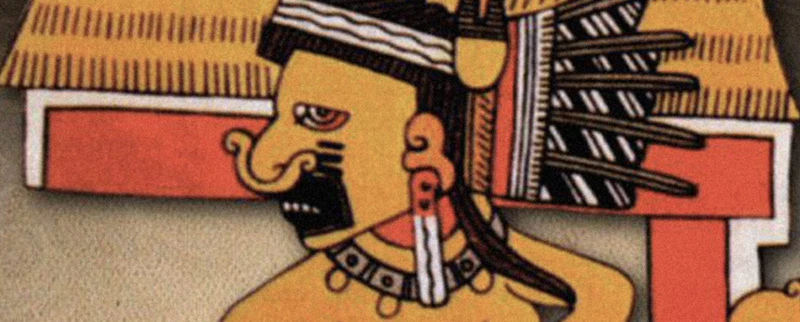
Aztec Cosmology: A Brief Overview
Aztec cosmology was a deeply ingrained belief system that shaped every aspect of the Aztec civilization. At the heart of their cosmology was the idea of a sacred universe, intricately connected and in constant interaction with various realms. The Aztecs believed that the universe was comprised of layers, with the earth plane at the center. The heavens, represented by thirteen celestial astro-houses, were inhabited by countless gods and goddesses who governed different aspects of life. These deities played a crucial role in the Aztec belief system and were worshipped through elaborate temples and rituals. The Aztecs considered their emperor, who served as the earthly representative of the gods, as the crucial link between the earthly and divine realms. The rituals performed in the temples were believed to ensure the harmonious balance between humans and the gods, crucial for the well-being of the entire society. These rituals included offerings, dance, music, and even human sacrifice. The Aztec cosmology was a complex and intricate belief system that intertwined the spiritual and physical realms, guiding every aspect of Aztec life. (1)
The Sacred Universe of the Aztecs
The Sacred Universe of the Aztecs
According to Aztec cosmology, the universe was a sacred and interconnected web of celestial and earthly realms. At the center of this belief system was the earth plane, known as Tlalticpac, where humans resided. Above Tlalticpac were thirteen celestial astro-houses that represented the heavens. Each astro-house corresponded to a specific deity and governed different aspects of life, such as agriculture, fertility, war, and wisdom. The astro-houses were seen as divine abodes, where the gods and goddesses resided and influenced the events on Earth. These celestial realms were not empty, but rather inhabited by countless celestial beings who played vital roles in the cosmic order. The Aztecs believed that constant interaction between the celestial and earthly realms was necessary to maintain balance and prosperity. Ceremonies and rituals were performed to ensure the harmonious relationship between humans and the celestial gods. These rituals were conducted in various temples, with each temple dedicated to a particular deity. By honoring the gods and participating in these rituals, the Aztecs believed they could maintain their place within the sacred universe and receive blessings and protection from the divine forces. The Sacred Universe of the Aztecs was a cosmology deeply embedded in their daily lives, guiding their spiritual connections and societal structure. (1)
The Role of Gods and Goddesses
The Role of Gods and Goddesses
In Aztec cosmology, gods and goddesses played a central role, as they were believed to govern various aspects of life. The Aztecs worshipped a vast pantheon of deities, each with their own unique powers and domains. One prominent deity was Huitzilopochtli, the Aztec god of war and the sun. He was considered the patron god of the Aztecs and demanded blood sacrifices to sustain his strength and ensure the prosperity of the empire. Another important deity was Quetzalcoatl, the feathered serpent god associated with creation and fertility. Quetzalcoatl was known as the bringer of civilization, arts, and agriculture. Tlaloc, the rain god, was revered for his ability to bring life-giving water to the crops. Aside from these well-known deities, there were countless others, including goddesses such as Coatlicue, the mother of all gods, and Xochiquetzal, the goddess of beauty and fertility. Each god and goddess had a specific role within the Aztec cosmology, and their favor was sought through offerings, rituals, and ceremonies. The Aztecs believed that by honoring and appeasing these deities, they could ensure the harmony of the universe and the well-being of their society. The intricate relationship between humans and gods was a fundamental aspect of Aztec cosmology and shaped every aspect of their lives. (1)
The Importance of Temples and Rituals
The Importance of Temples and Rituals
In Aztec cosmology, temples held a central role as spaces of profound spiritual significance. These awe-inspiring structures were believed to be a direct link between the earthly realm and the divine. Each temple was dedicated to a specific deity, and worshippers would visit to pay their respects and seek blessings. The temples were often adorned with intricate carvings, murals, and sculptures, showcasing the grandeur of Aztec artistry and their devotion to the gods. Rituals conducted within the temples were essential for maintaining the cosmic order and ensuring the well-being of the Aztec civilization. These rituals involved highly stylized ceremonies, music, dance, and chanting. Human sacrifice was also a prominent feature of Aztec rituals, believed to be a necessary offering to appease the gods. Sacrificial rituals were conducted to honor specific deities and to ensure the fertility of the land, prosperity, and protection from harm. The dedication and participation in these rituals were seen as essential for the harmonious balance between the gods and humans. Through the temples and rituals, the Aztecs sought to maintain their cosmic order and secure the favor of the gods. (1)
The Afterlife in Aztec Beliefs
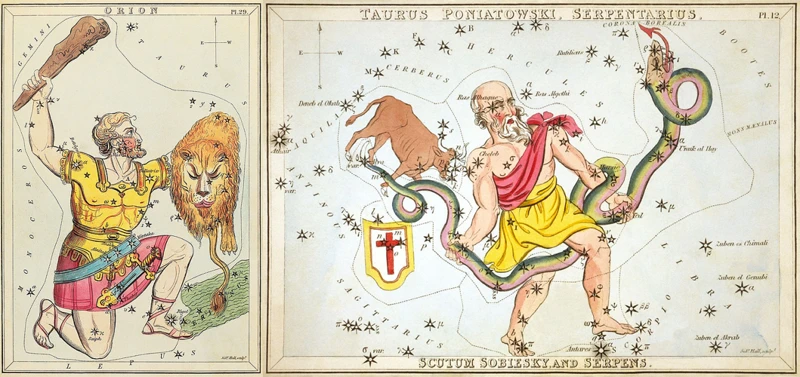
The Afterlife in Aztec Beliefs
In Aztec beliefs, the afterlife held great significance and was viewed as a continuation of one’s journey rather than a final destination. The Aztecs believed that after death, the soul embarked on a transformative voyage to the underworld, known as Mictlan. The destination of the soul in the afterlife was determined by various factors, such as the manner of death and the allegiance to specific deities. According to Aztec cosmology, there were multiple realms in the afterlife, each associated with different deities. One of these realms was the blissful paradise of Tlalocan, where those who died from drowning or related water-related deaths resided. Another realm was Mictlan, which was the final resting place for most souls. Mictlan was a dark and dangerous place, and the souls had to overcome numerous challenges, including traversing dangerous rivers and encountering fearsome creatures. However, not all souls would remain in Mictlan indefinitely. Some would participate in the cycle of rebirth and return to the earthly realm in the form of animals, plants, or other individuals. To ensure a favorable afterlife, the Aztecs performed various rituals and offered prayers and sacrifices to the gods. These offerings included food, drink, sacred objects, and even human sacrifices. The Aztec belief in the afterlife was deeply intertwined with their complex cosmology, highlighting the significance they placed on the journey of the soul beyond death. (2)
Concepts of the Soul
Concepts of the Soul
In Aztec beliefs, the soul played a central role in the afterlife and the journey to other realms. The Aztecs believed that each person possessed three souls: the tonalli, the teyolia, and the ihiyotl. The tonalli, associated with the shadow, was the most vital soul, tied to a person’s destiny and individual life force. It was believed to reside in the head, and its energy was closely linked to the sun. The teyolia, often referred to as the “divine soul,” was the higher spiritual essence within a person, connected to the divine and the gods. The ihiyotl represented the life essence and was associated with breath and vitality. It was believed that the ihiyotl would join the wind and the rain upon death. The Aztecs believed that the soul survived after death and embarked on a journey to the underworld or one of the several realms of the afterlife. This belief in multiple souls and their connection to different aspects of existence was an integral part of Aztec cosmology and their understanding of the afterlife. (1)
The Journey to the Underworld
The Journey to the Underworld
In Aztec beliefs, the journey to the underworld held great significance. It was believed that upon death, the soul embarked on a treacherous journey through the nine different realms of the underworld, known as Mictlan. (2) The journey was not an easy one and was fraught with challenges and dangers. The soul had to navigate through dark and twisted paths, crossing rivers and mountains, and facing fierce demons and guardians along the way. To assist the soul on this journey, various rituals and offerings were performed by the living. Many Aztecs were laid to rest with valuable possessions, food, and water to sustain them on their journey. The soul had to pass through nine gates, each guarded by a god or goddess who tested the deceased’s worthiness. Only those who successfully answered the challenges and passed through all the gates could reach their final resting place in the afterlife. This journey highlighted the Aztec belief in the cyclical nature of life and death, as well as the importance of preparing oneself for the challenges of the afterlife. It also emphasized the belief in the interconnectedness of the spiritual and earthly realms, where the living had a role to play in assisting the departed on their journey to the underworld.
The Different Realms of the Afterlife
The Different Realms of the Afterlife
According to Aztec beliefs, there were multiple realms in the afterlife, each with its own significance. The Aztecs believed that upon death, a person’s soul embarked on a journey to one of these realms based on their actions and circumstances during their lifetime. One of the most revered realms was Mictlan, the world of the dead. Mictlan was ruled by Mictlantecuhtli and Mictecacihuatl, the lord and lady of the underworld. It was a dark and treacherous place where souls underwent trials and challenges to reach their ultimate resting place. Another realm was Tlalocan, a paradise reserved for those who died a watery death or sacrificed themselves for rain. It was a lush and abundant realm ruled by Tlaloc, the god of rain and fertility. For warriors who died in battle, their destination was the sun-god’s palace, Tonatiuhichan, where they would spend eternity in the presence of Tonatiuh, the sun god. Additionally, for women who died during childbirth and those who were sacrificed, the realm of Chichihuacuauhco awaited. This realm was presided over by Cihuacoatl, the goddess of childbirth, and was a place of eternal bliss. It is fascinating to explore these different realms and how each offered unique rewards or challenges based on a person’s actions and circumstances in life. (2)
Offerings and Rituals for the Departed
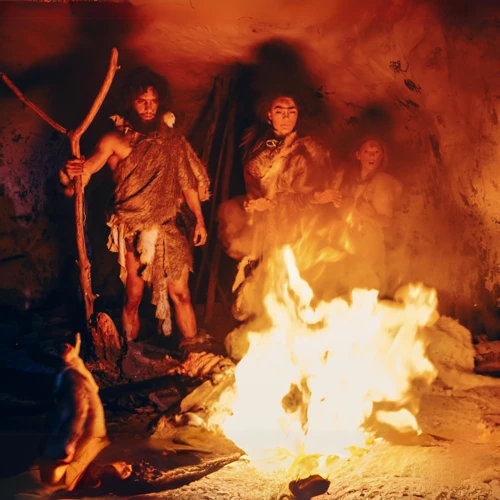
Offerings and Rituals for the Departed
In Aztec beliefs, the journey to the afterlife was an important transition, and it was crucial to ensure that the departed had a favorable experience. To fulfill this responsibility, the Aztecs performed elaborate rituals and offerings for the departed. Ancestor worship played a significant role in Aztec culture, and it involved honoring and remembering their deceased loved ones. Family members would create an altar in their homes, adorned with flowers, candles, and the favorite belongings of the departed. They would offer food, water, and other items to nourish and assist the spirits on their journey. These offerings were believed to sustain and provide comfort to the deceased in the afterlife. One particularly renowned ritual was the “Day of the Dead” festival, lasting several days in modern-day Mexico. During this festival, families would visit cemeteries, clean and decorate the graves of their ancestors, and bring offerings such as favorite foods, flowers, and photographs. These festivities were a way to celebrate the memories of the deceased and reinforce the belief that they were still present in the lives of the living. The Aztecs understood the importance of honoring and remembering their ancestors, and through their offerings and rituals, they sought to ensure a positive and prosperous afterlife for their departed loved ones. (1)
The Rituals of Ancestor Worship
The Rituals of Ancestor Worship
Ancestor worship was an integral part of Aztec beliefs and played a significant role in their rituals and religious practices. The Aztecs believed that the spirits of their ancestors remained present and actively involved in their daily lives. The rituals of ancestor worship were conducted to honor and pay respect to these ancestral spirits. One of the key rituals was the creation of altars dedicated to the ancestors, which were adorned with offerings such as food, drink, and symbolic objects. These altars were typically placed in the homes of the living family members. It was believed that by offering gifts and prayers, the ancestral spirits would continue to watch over and protect their descendants. Another important ritual was the performance of dances and music that were believed to attract and please the spirits of the ancestors. These dances often involved intricate movements and colorful costumes, symbolizing the connection between the living and the deceased. Additionally, the Aztecs would often engage in communal meals called “commensalism,” where they would share food and drink with the spirits of their ancestors. It was believed that this act of sharing nourishment would strengthen the bond between the living and the deceased. These rituals of ancestor worship were deeply ingrained in Aztec society, fostering a sense of connection and continuity between the present and the past. (1)
Offerings to Ensure a Favorable Afterlife
Offerings to Ensure a Favorable Afterlife
In Aztec beliefs, ensuring a favorable afterlife was of utmost importance. The Aztecs believed that upon death, the soul embarked on a perilous journey to the underworld, known as Mictlan. To aid the departed in this journey, offerings played a crucial role. These offerings included a variety of items such as food, drink, and personal belongings. The Aztecs believed that these offerings would provide sustenance and comfort to the soul during their journey. Additionally, precious objects, such as jewelry or intricate crafts, were often included to symbolize wealth and status. These offerings were typically placed in the tomb or at the site of burial. The Aztecs also believed that by performing rituals and ceremonies, they could communicate with their ancestors and ensure their continued support and guidance. The rituals involved the burning of incense, the chanting of prayers, and the playing of musical instruments. Through these offerings and rituals, the Aztecs sought to honor their departed loved ones and ensure a favorable afterlife filled with peace and prosperity. (1)
The Day of the Dead: Celebrating the Departed
The Day of the Dead, known as “Dia de los Muertos” in Spanish, is a vibrant and colorful celebration in Mexican culture that honors and remembers the departed loved ones. This annual festivity holds great significance in Aztec beliefs about the afterlife. The celebration takes place on November 1st and 2nd, coinciding with the Catholic All Saints’ Day and All Souls’ Day. During this time, families come together to commemorate their ancestors and create a joyful atmosphere filled with music, food, and decorations. One of the key elements of the Day of the Dead is the creation of elaborate altars, known as “ofrendas,” in homes and cemeteries. These altars are adorned with marigolds, candles, and the favorite foods and beverages of the departed. It is believed that the souls of the deceased return during this period and are welcomed with their cherished offerings, helping them sustain their journey in the afterlife. This celebration is a beautiful blend of Aztec beliefs and Catholic traditions, demonstrating the cultural resilience and deep connection to honoring the departed. It serves as a reminder of the intertwined relationship between the living and the dead, fostering remembrance and keeping ancestral spirits alive within the community. Whether it’s through the sharing of stories, offering prayers, or visiting gravesites, the Day of the Dead is a cherished time to celebrate the lives and legacies of those who have passed on. (3)
Mythology and Stories about the Afterlife
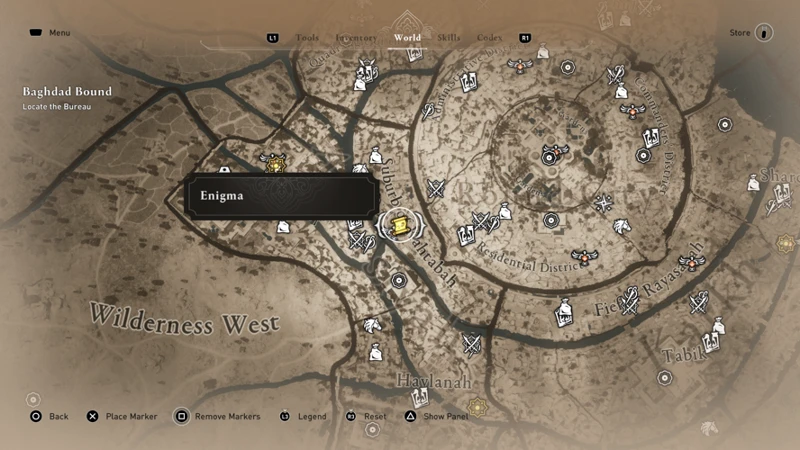
Mythology and Stories about the Afterlife
The Aztecs had a rich collection of mythology and stories that shed light on their beliefs about the afterlife. One of the most well-known myths is the story of Nanahuatzin, the sacred journey of the sun. According to the legend, Nanahuatzin sacrificed himself by immolating his own body to become the sun, embarking on a perilous journey through the cosmos. This myth symbolizes the cycle of life, death, and rebirth, emphasizing the Aztec belief in the eternal nature of the soul. Another captivating story is that of the Hero Twins. These twin brothers, born to a human mother and an underworld deity father, set out on a treacherous journey to Mictlan, the Aztec underworld. They faced numerous challenges and encountered fearsome creatures along the way, demonstrating the Aztec belief in a complex underworld and the trials one must endure to reach the afterlife. Xolotl, the guide of souls, also played a significant role in Aztec mythology. He was believed to accompany the souls of the deceased on their journey through the underworld, protecting them from harm. Lastly, the mythical journey of Quetzalcoatl to retrieve the bones of humanity is another captivating tale. Quetzalcoatl descended into the underworld to retrieve the bones of the past generations, which were used to create humanity. These mythological stories provided the Aztecs with a narrative framework through which they could understand and navigate the complex realms of the afterlife. (2)
The Sacred Journey of the Sun: The Story of Nanahuatzin
The Sacred Journey of the Sun: The Story of Nanahuatzin
In Aztec mythology, the story of Nanahuatzin tells the sacred journey of the sun. According to the legend, the gods gathered in Teotihuacan, the mythical birthplace of the sun and moon. They sought a volunteer who, through a sacrificial act, would transform into the sun and bring light and warmth to the world. Nanahuatzin, a humble and sickly god, stepped forward, offering himself to undertake this momentous task. He prepared for the ritual by purifying himself through fasting and prayer, and covering himself with precious feathers. As the ritual commenced, Nanahuatzin bravely leaped into a sacred fire. He burned fiercely, transcending his mortal form and transforming into Tonatiuh, the fifth sun, who would traverse the sky and illuminate the earth. This myth symbolizes the cyclical nature of the sun’s journey and its importance in sustaining life. It also reflects the Aztecs’ deep reverence for sacrifice and the belief that through selflessness, one could contribute to the greater good of society. The story of Nanahuatzin highlights the profound connection between the human and divine realms in Aztec cosmology, where gods and mortals coexisted in a delicate balance. (2)
The Hero Twins: Journey to Mictlan
The Hero Twins: Journey to Mictlan
In Aztec mythology, the Hero Twins, Xbalanque and Hunahpu, embarked on a perilous journey to Mictlan, the realm of the underworld. According to the myth, the Twins’ father, Hun Hunahpu, had been defeated and killed by the Lords of the Underworld. Determined to avenge their father’s death, the Hero Twins faced a series of challenges and tests as they made their way through the treacherous paths of Mictlan. One of their most significant challenges was defeating the Nine Lords of the Underworld, who ruled over various stages of the journey. Each lord tested the Twins in different ways, but with their wit, courage, and the aid of divine assistance from the gods, the Twins managed to overcome each obstacle. One of their notable accomplishments was winning a ball game against the Lords, ultimately bringing their father back to life. This myth symbolized the triumph of life over death and the eternal struggle against darkness. The Hero Twins’ journey to Mictlan serves as a reminder of the Aztec belief in the afterlife and the importance of bravery and resilience in facing the challenges that lie beyond death’s threshold. (2)
Xolotl: The Guide of Souls
Xolotl: The Guide of Souls
In Aztec mythology, Xolotl played a significant role as the guide of souls. He was the twin brother of Quetzalcoatl, the feathered serpent god, and possessed a canine appearance, often depicted with a dog-like face and dark, sunken eyes. Xolotl’s primary responsibility was to traverse the treacherous underworld alongside the deceased, ensuring their safe journey to their final destination. He guided the souls through the dangerous nine levels of the underworld, known as Mictlan, where they had to face numerous tests and trials.
According to Aztec beliefs, the journey to the underworld was fraught with challenges, such as crossing the fearsome River of Blood, avoiding the traps set by the god of the underworld, and overcoming various supernatural obstacles. Xolotl provided protection and guidance to the souls, helping them navigate through these perils. He was their loyal companion and guardian, assisting them in their passage to the realm of the dead.
In addition to his role as the guide of souls, Xolotl also had other associations and symbolism within Aztec cosmology. He was connected to Venus, often considered its god or spirit, and was part of rituals related to the planet’s movements. Xolotl was a multifaceted deity who represented transformation, duality, and the liminal spaces between life and death.
The mythology surrounding Xolotl demonstrates the intricate beliefs of the Aztecs regarding the afterlife and the significance they placed on the soul’s journey. Through Xolotl’s guidance and protection, the Aztecs sought to ensure a safe passage for the departed and an auspicious afterlife filled with eternal bliss. Xolotl’s role as the guide of souls highlighted the Aztec’s profound understanding and reverence for the journey beyond earthly existence. (1
Quetzalcoatl: A Mythical Journey to Retrieve the Bones of Humanity
Quetzalcoatl: A Mythical Journey to Retrieve the Bones of Humanity
Quetzalcoatl, the revered feathered serpent deity in Aztec mythology, embarked on a mythical journey to retrieve the bones of humanity. According to Aztec beliefs, the world had gone through multiple ages before the current one, each of which ended in a cataclysmic event. Quetzalcoatl, in his divine wisdom, sought to restore balance and humanity by gathering the scattered bones of the previous ages from the underworld, known as Mictlan. (1)
The journey of Quetzalcoatl was filled with trials and challenges as he navigated through the treacherous underworld. It was in Mictlan that Quetzalcoatl encountered various deities and confronted terrifying obstacles. One of the most significant challenges he faced was acquiring the sacred bones of humanity, which were guarded by the god Mictlantecuhtli, the ruler of Mictlan. Quetzalcoatl, with his cunning and divine abilities, managed to outwit Mictlantecuhtli and secure the precious bones. (2)
Upon his successful retrieval, Quetzalcoatl emerged from the underworld, carrying the bones of humanity. It is said that he breathed life into the bones, transforming them into the people of the current age. This mythical journey symbolized the cycle of life, death, and rebirth and demonstrated Quetzalcoatl’s role as a creator and savior figure in Aztec cosmology. (3)
The story of Quetzalcoatl’s journey to retrieve the bones of humanity holds great significance in Aztec mythology. It represents the constant cycle of creation and destruction, highlighting the Aztec belief in the cyclical nature of time. Quetzalcoatl’s role as a bringer of life and rebirth resonates with the Aztec’s understanding of the afterlife and the continuous cycle of existence. Through this mythical journey, Quetzalcoatl symbolizes the eternal connection between the divine realm and humanity, bridging the gap between life and death. (4)
For more information on Aztec cosmology and their intricate understanding of the universe, you can refer to our previous article on celestial astro-houses. (1)
Conclusion
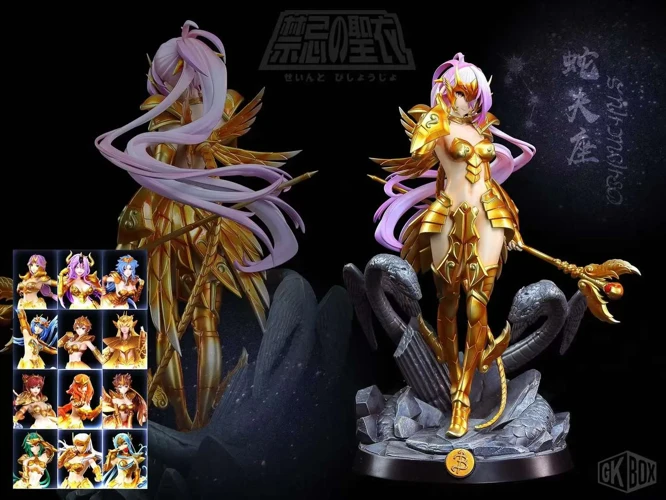
Conclusion
Through our exploration of Aztec cosmology and their beliefs about the afterlife, we have gained a deeper understanding of the rich tapestry of Aztec culture and spirituality. The Aztecs had a profound reverence for the natural world and believed in the interconnectedness of all things. Their cosmology centered around gods and goddesses who ruled over different aspects of life, and their elaborate temples and rituals were dedicated to maintaining a harmonious relationship with these divine entities. In their beliefs about the afterlife, the Aztecs envisioned a soul’s journey to the underworld, where it would navigate through various realms, encountering different challenges and rewards. They also engaged in rituals and offerings to ensure a favorable afterlife for their departed loved ones. The myths and stories surrounding the afterlife provided a window into the Aztec worldview, showcasing the heroic journeys and mythical beings who guided souls. This deep-rooted belief system permeated every aspect of Aztec life and continues to fascinate and captivate modern-day scholars and enthusiasts. As we conclude our exploration, we leave with a newfound appreciation for the complexity and profundity of Aztec cosmology, and its enduring legacy in shaping their civilization. (1)
Frequently Asked Questions

1. Did the Aztecs believe in multiple gods?
Yes, the Aztecs believed in a pantheon of gods and goddesses who governed different aspects of life, such as agriculture, fertility, and war.
2. What was the purpose of temples in Aztec cosmology?
Temples were considered sacred spaces where the Aztecs could connect with the divine. They served as locations for rituals and offerings to the gods.
3. Were there different realms in the Aztec belief system?
Yes, the Aztecs believed in multiple realms, including the earthly realm, the heavens where the gods resided, and the underworld, which was the realm of the dead.
4. How did the Aztecs view the concept of the soul?
The Aztecs believed that the soul was comprised of multiple components, including the tonalli (shadow-soul) and the teyolia (spiritual essence). They believed that these components continued to exist after death.
5. Can you explain the journey to the underworld in Aztec beliefs?
According to Aztec beliefs, the journey to the underworld was perilous. The soul had to navigate through various challenges and obstacles, encountering dangerous creatures and performing tasks to reach the final resting place.
6. What were the rituals performed for the departed in Aztec culture?
One important ritual was ancestor worship, where the deceased ancestors were honored and revered. Offerings, such as food, drink, and personal belongings, were made to ensure their well-being in the afterlife.
7. What offerings were made to secure a favorable afterlife?
Aztecs believed in making lavish offerings to ensure a favorable afterlife. They would present items such as precious stones, feathers, food, and even sacrificial victims to appease the gods and ensure the deceased’s journey to the afterlife was successful.
8. How did the Aztecs celebrate the departed?
The Aztecs celebrated the departed during the “Day of the Dead” festival. They believed that during this time, the spirits of the deceased returned to the earthly realm to reunite with their loved ones. Offerings, feasts, and rituals were held to honor and remember them.
9. What are some notable myths and stories about the afterlife in Aztec culture?
One famous myth is the story of Nanahuatzin, who sacrificed himself to become the sun and embarked on a sacred journey. Another is the tale of the Hero Twins who ventured into the underworld, called Mictlan, to retrieve the bones of humanity.
10. Was there a god associated with guiding souls in Aztec beliefs?
Yes, Xolotl was the god associated with guiding souls to the afterlife. He was depicted as a dog-headed deity and was believed to accompany the sun on its journey to the underworld.
References
- Death Beliefs & Rituals of the Aztec Culture
- What did the Aztecs believe would happen in the afterlife?
Frequently Asked Questions

1. How did Aztecs view the universe and its structure?
The Aztecs believed that the universe was a sacred place governed by powerful gods and divided into different realms, both earthly and celestial.
2. Who were the main gods and goddesses in Aztec cosmology?
The Aztecs had a vast pantheon of gods and goddesses, but some of the most important ones included Huitzilopochtli, the god of war and sun, and Quetzalcoatl, the feathered serpent deity associated with wisdom and creation.
3. What was the significance of temples and rituals in Aztec beliefs?
Temples were considered sacred spaces where the Aztecs could connect with the divine. Rituals played a crucial role in maintaining the balance of the universe and appeasing the gods.
4. What were the Aztec concepts of the soul?
The Aztecs believed that each individual had multiple souls. The tonalli was the vital principle associated with a person’s destiny, while the tlahuiztli represented the shadows and could travel to the underworld.
5. What was the journey to the Aztec underworld like?
The journey to the Aztec underworld, known as Mictlan, was challenging and treacherous. It involved crossing several dangerous rivers, passing through dark caves, and encountering various trials set by the gods.
6. What were the different realms of the Aztec afterlife?
The Aztecs believed in different realms of the afterlife based on a person’s actions and circumstances of their death. These realms included the paradise of Tlalocan, the sun for warriors, and Mictlan for the common people.
7. What rituals and offerings were made to honor the departed?
The Aztecs practiced ancestor worship and offered various rituals and offerings to ensure a favorable afterlife for their loved ones. These included food, drink, incense, and even human sacrifices during major ceremonies.
8. What is the significance of the Day of the Dead in Aztec culture?
The Day of the Dead, known as Dia de los Muertos, is a celebration that originates from Aztec traditions. It is a time to honor and remember the deceased through offerings, music, dance, and creating elaborate altars.
9. What are some famous Aztec myths and stories about the afterlife?
One famous myth is the story of Nanahuatzin, the sun deity who sacrificed himself to bring light to the world. Another is the tale of the Hero Twins who embarked on a perilous journey to Mictlan, the Aztec underworld.
10. Who was Xolotl and what was his role in the afterlife?
Xolotl was a deity associated with lightning, twins, and the evening star. He was believed to guide the souls of the deceased through the dangers of the underworld and help them reach their final resting place.
References
- Ancient Aztec Perspective on Death and Afterlife
- Aztec Religion
- Death Beliefs & Rituals of the Aztec Culture







